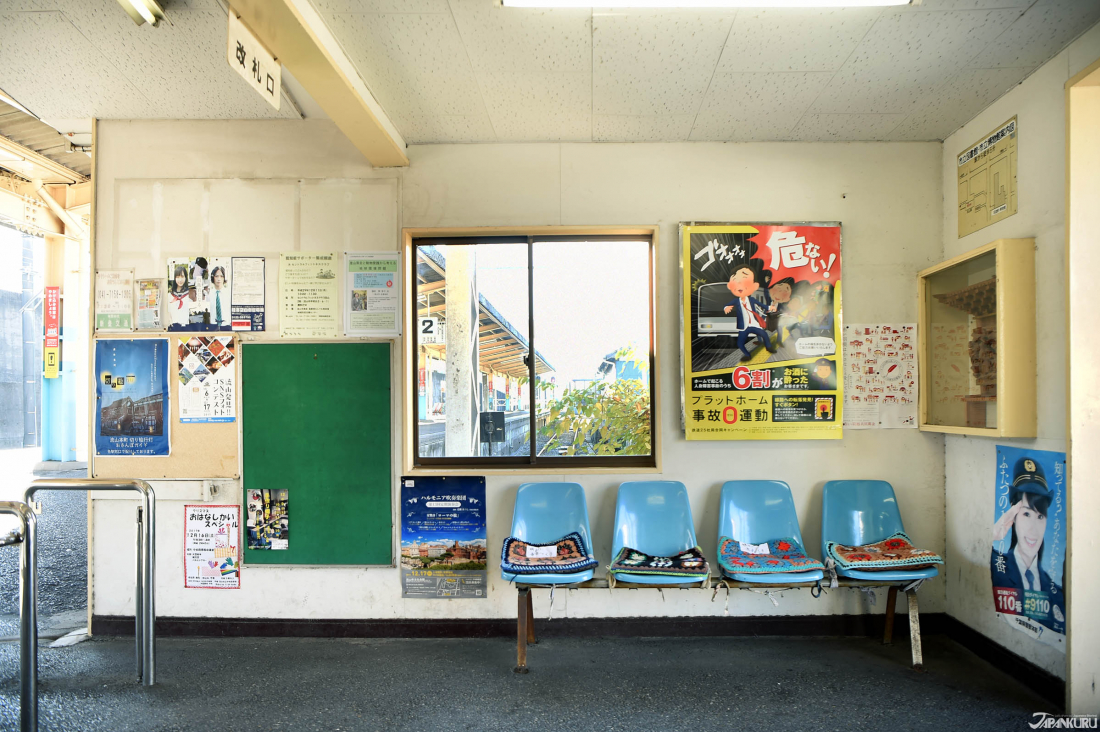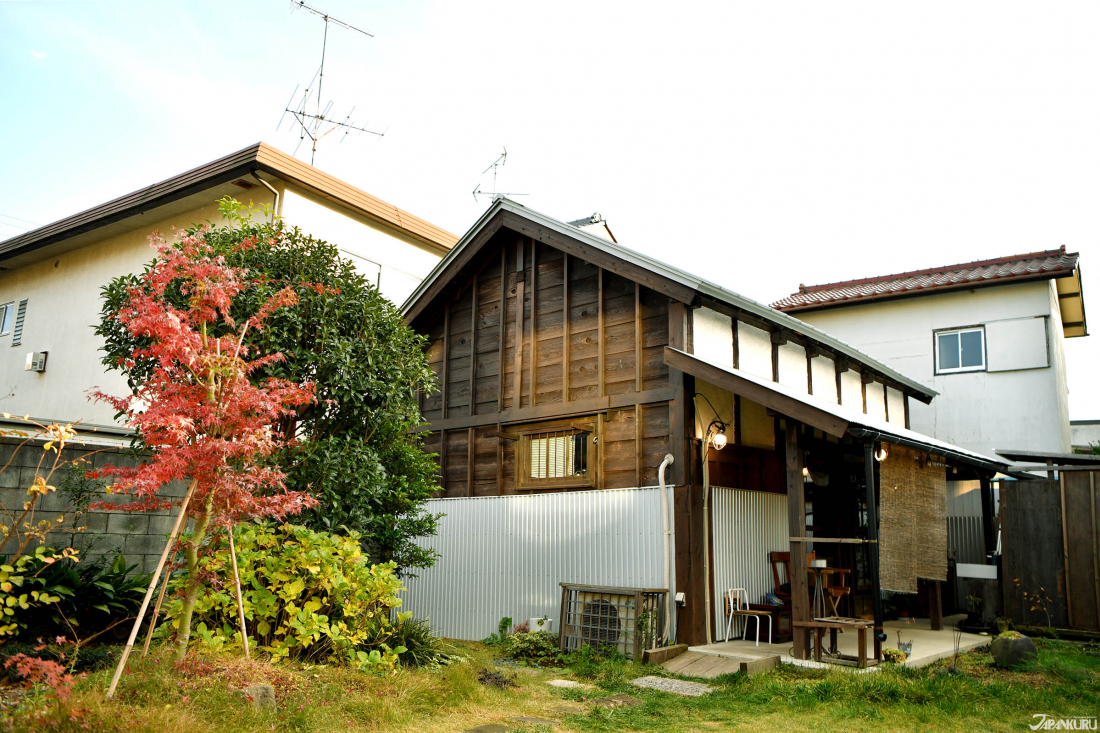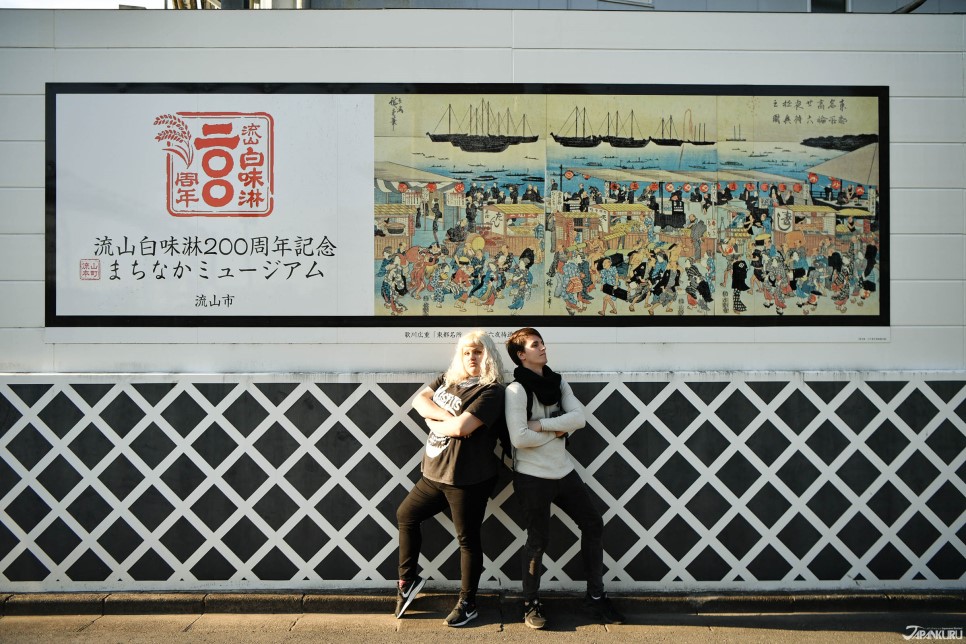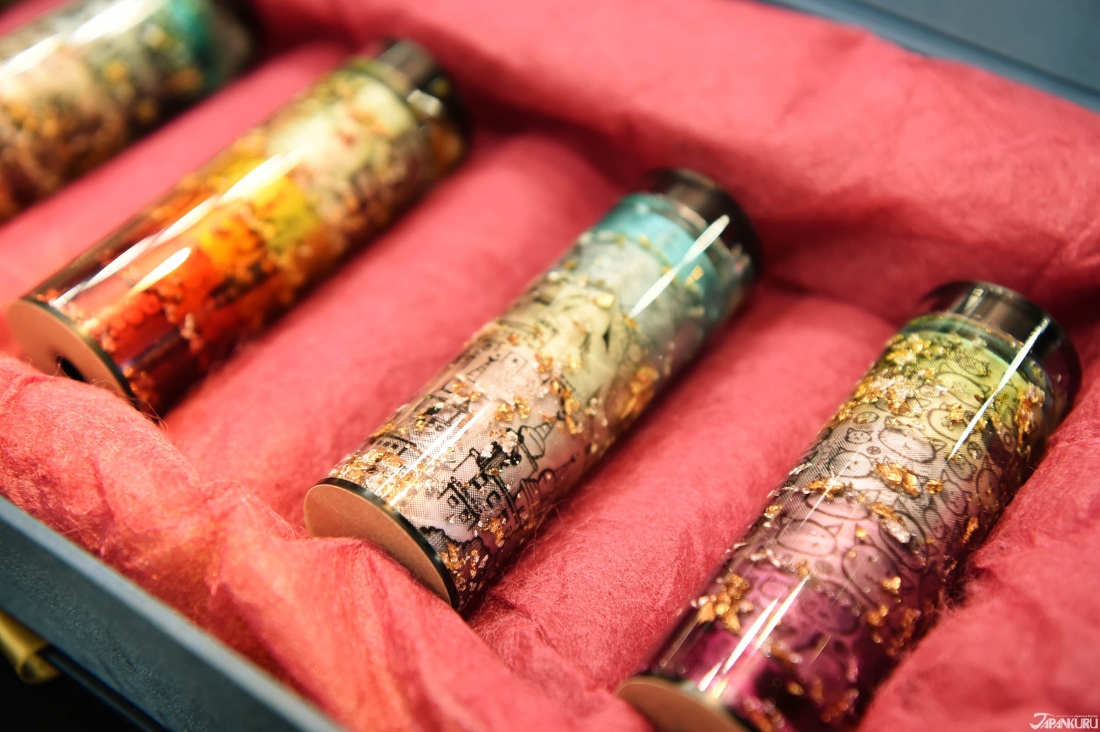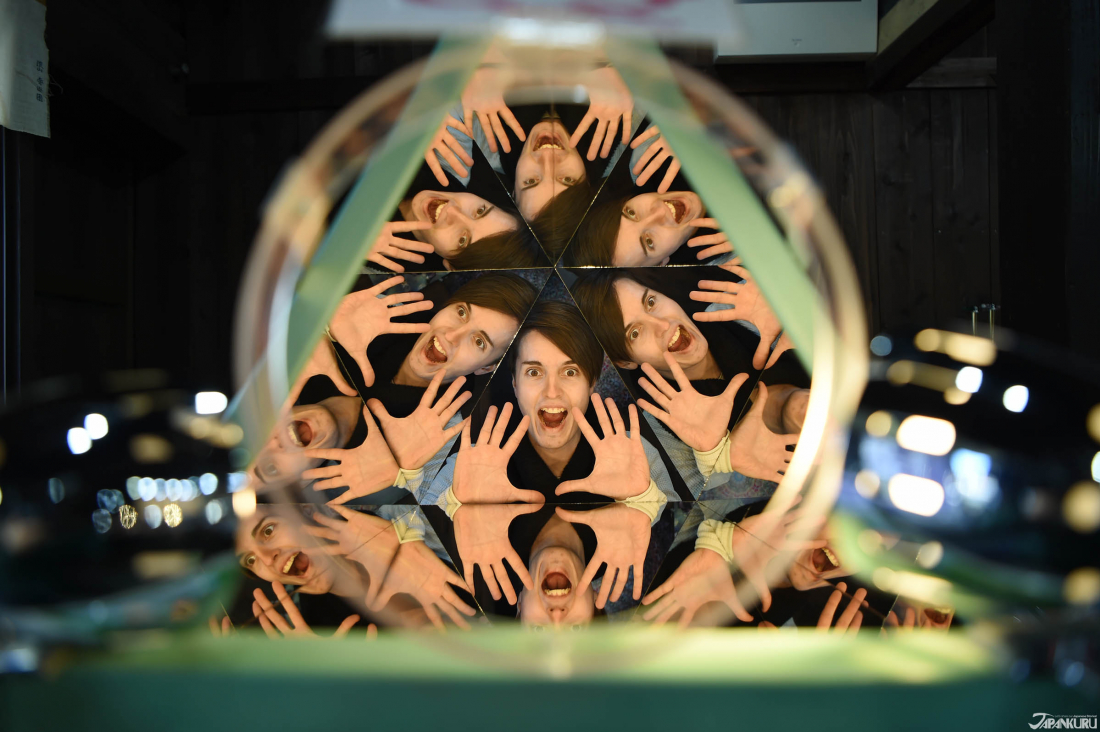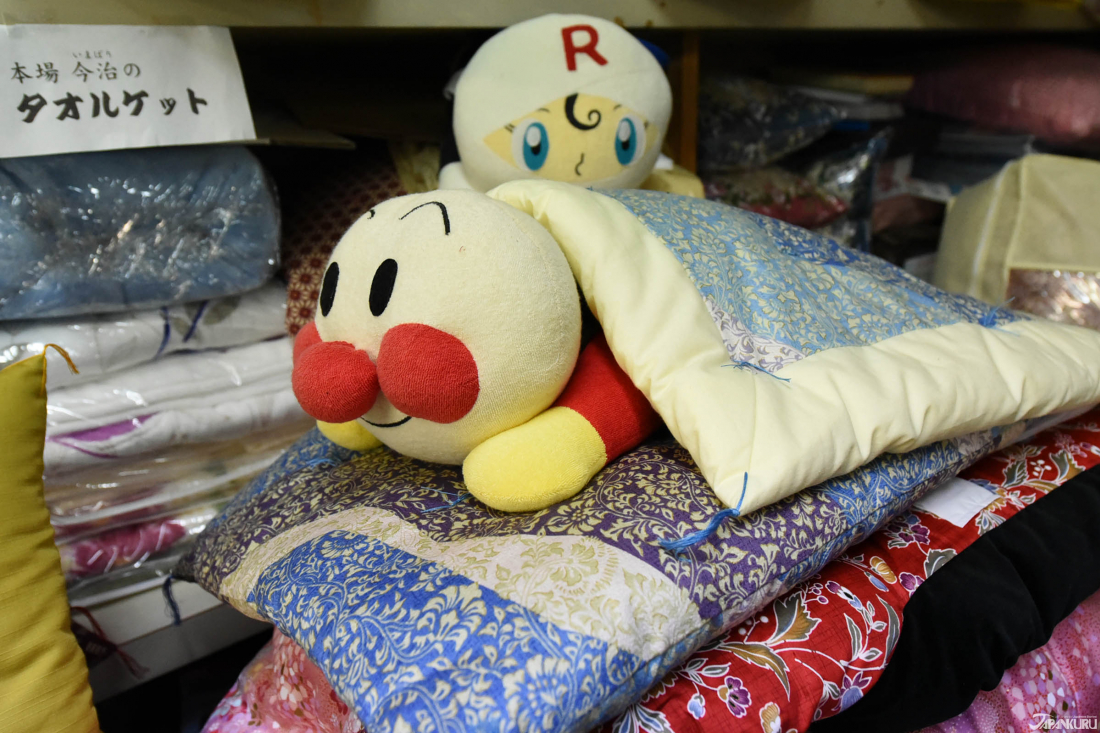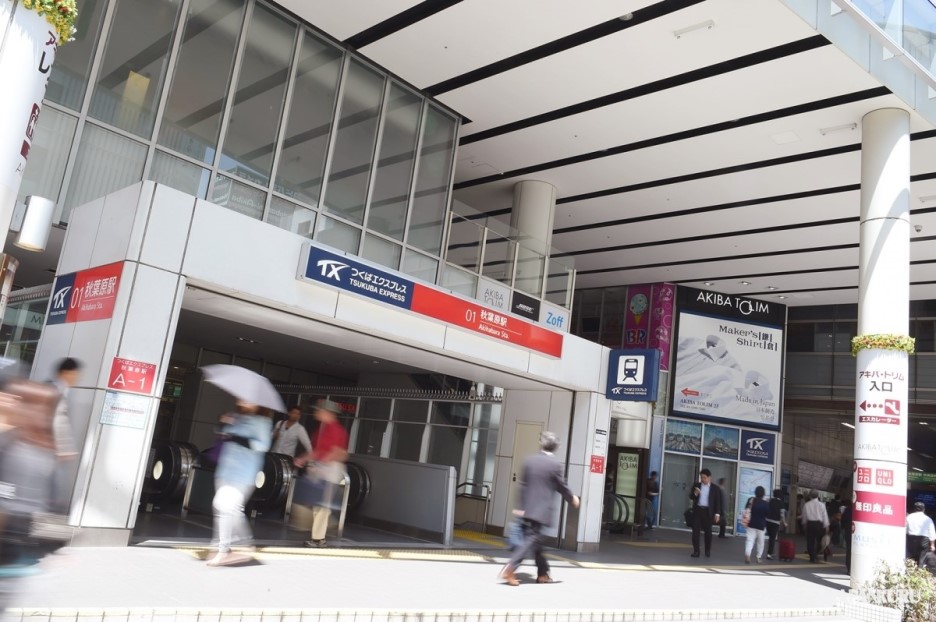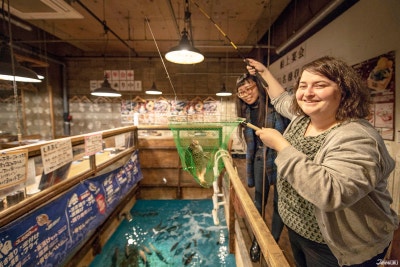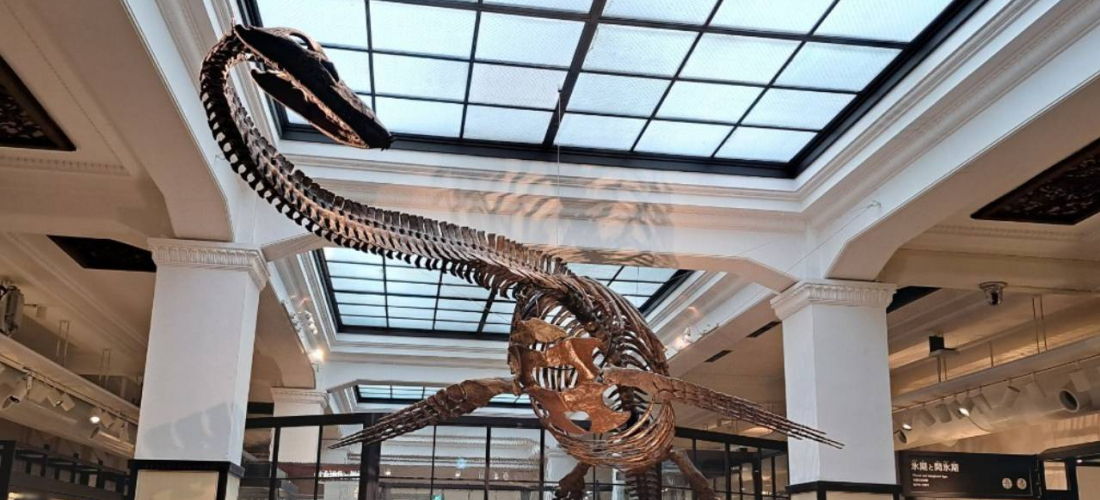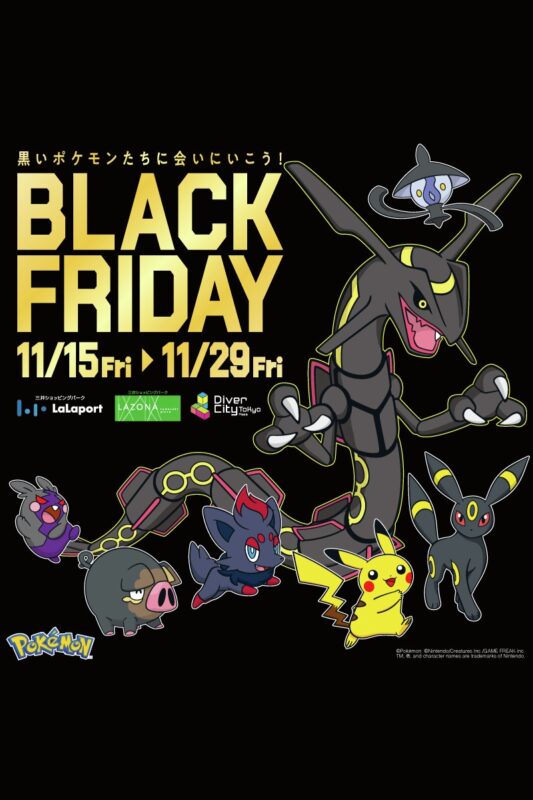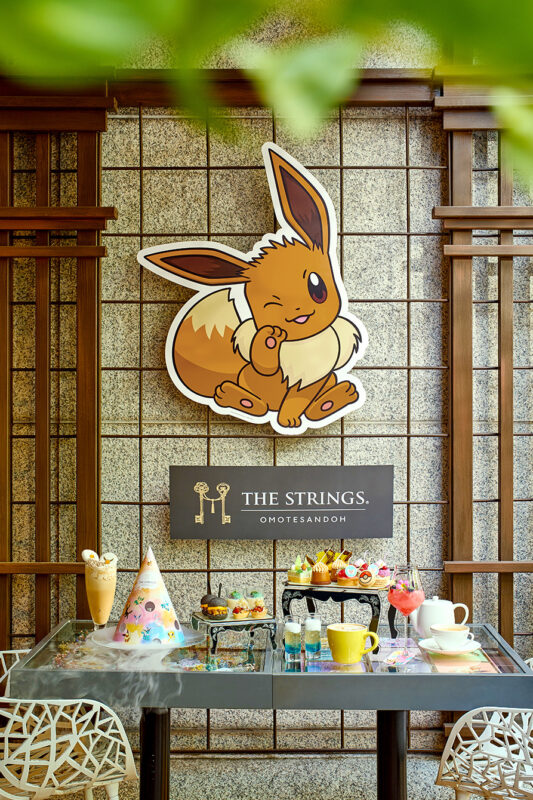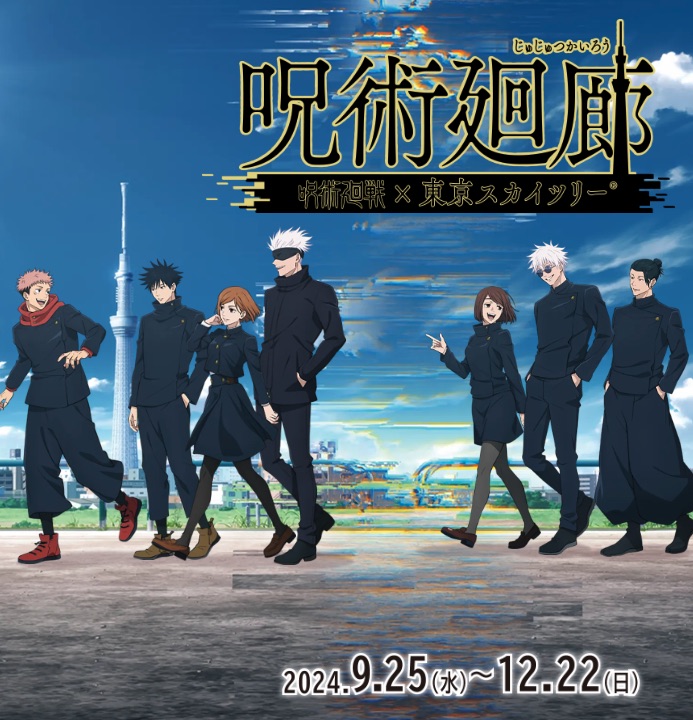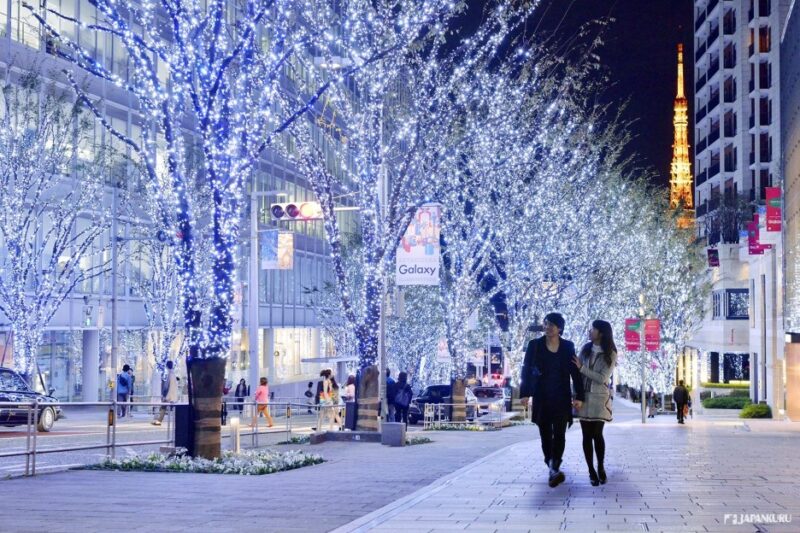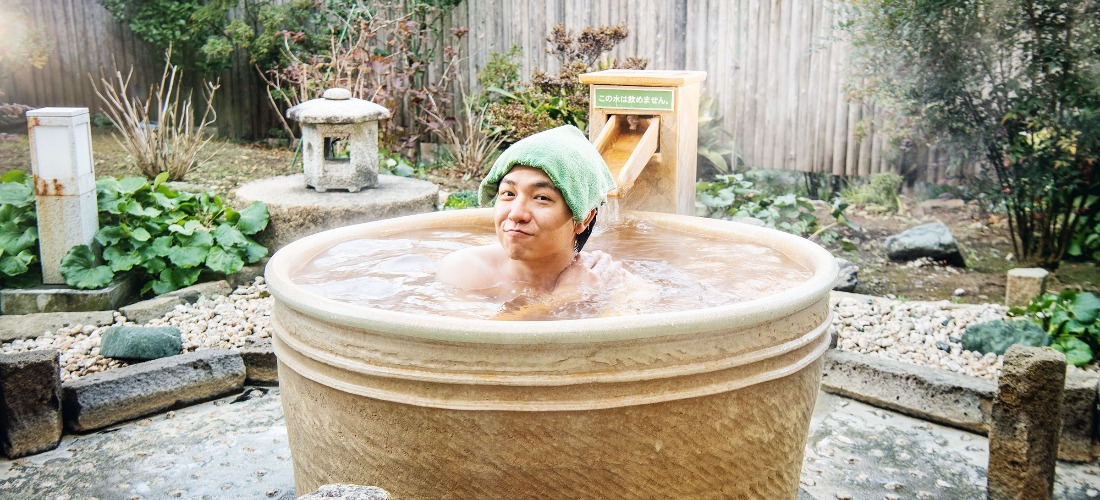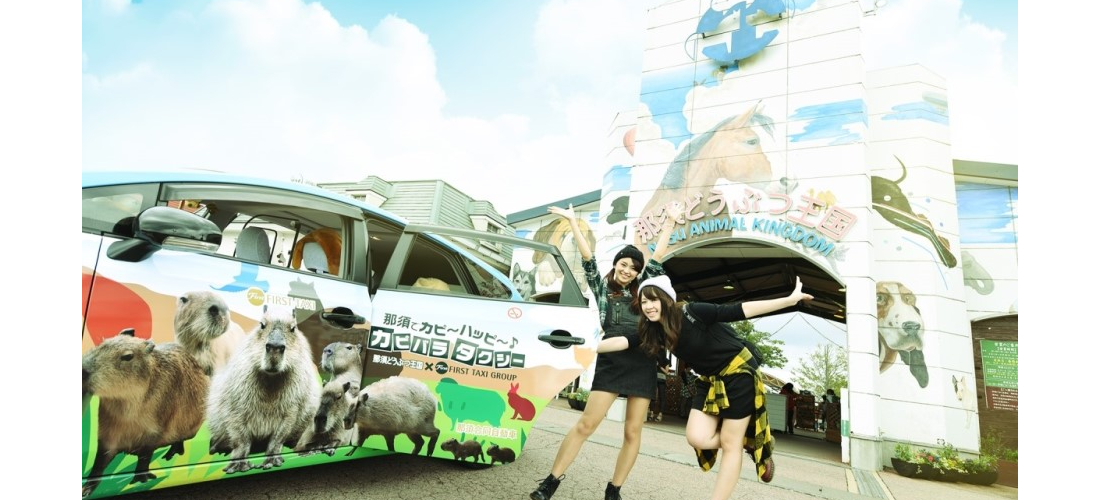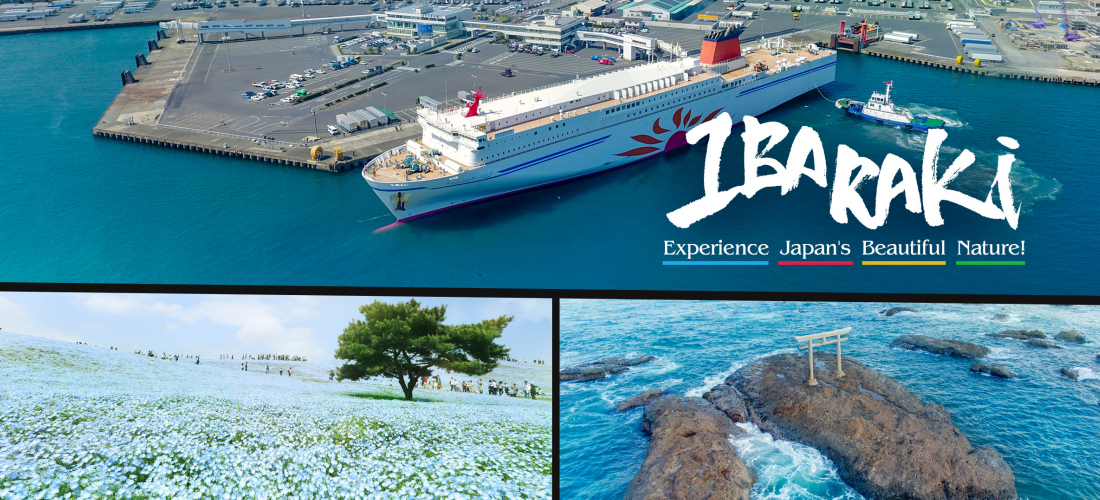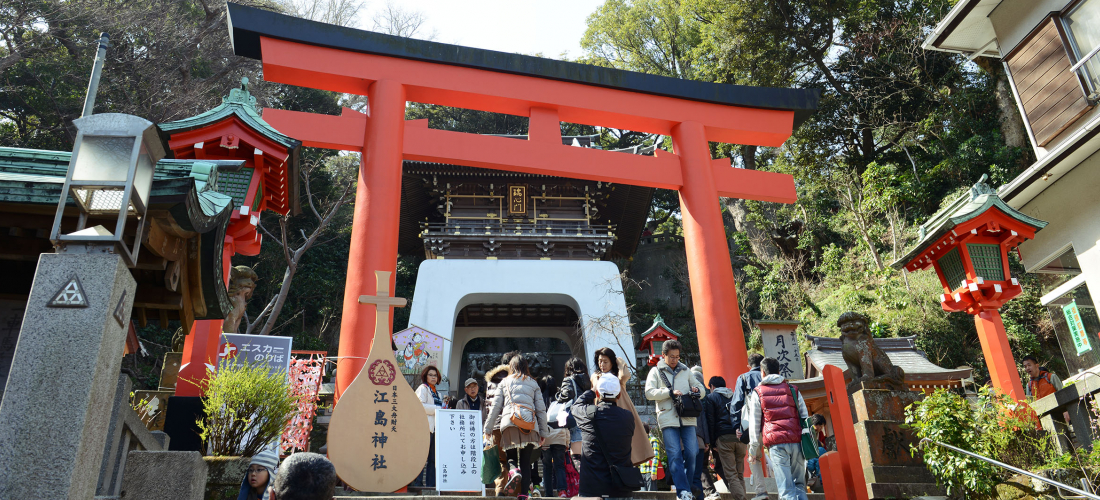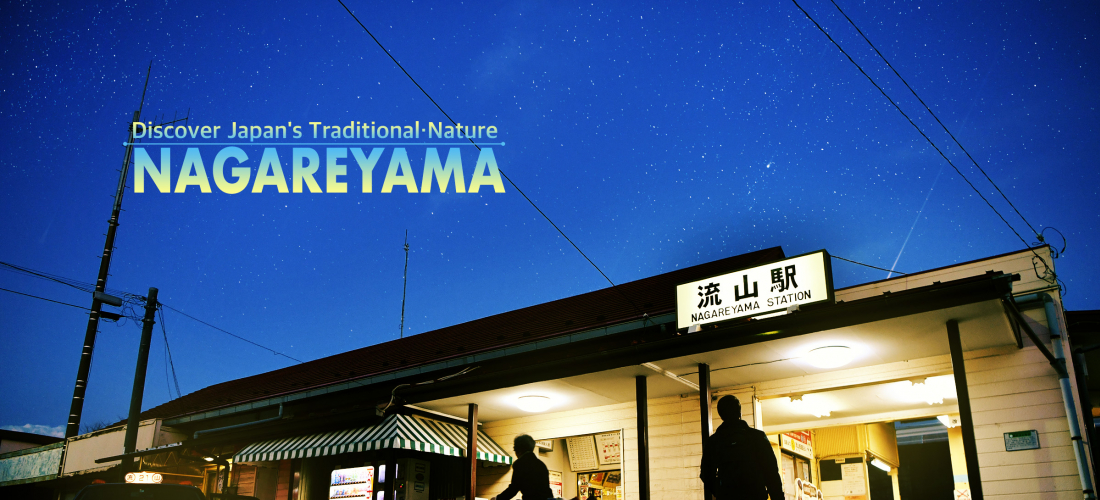
CONTENTS
Recently we went to a small local town that's close to Tokyo. That place is called Nagareyama and it's located in Japan's Chiba Prefecture. Nagareyama City, a city with a population of about 180,000, is a popular residential area (because the rent is so cheap!) with convenient transportation that can take you to Tokyo in about 20 minutes.
In Nagareyama there is Tone Canal which leads to the center of Tokyo's Edogawa, and its original purpose was for carrying goods by ship quickly and safely to Tokyo around the 1890's. So just on that information alone, you can expect there is a lot of unknown history and things to do here.
Which is whhhhhhhy, we decided to write about it and share with you all!!
1. Cafe ONIWA
A majority of the area in Nagareyama is covered with trees and other greenery and neat little cafes are hidden all over. Cafe Oniwa, for example, is the representative cafe and restaurant of Nagareyama. Cafe Oniwa is pretty hidden, but it has a lot of character and unlike any cafe or restaurant that we've been to in Japan yet. There are a lot of cafes and shops in Nagareyama that have renewed buildings because the city subsidizes them all. It is said that about 7 shops and cafés have been created as a subsidy system to prevent some of the depressing phenomena that historic buildings disappear. That is something you don't see in Tokyo.
the food was all healthy dishes made with only vegetables and greens.
☆CAFE ONIWA
534-2, Higashifukai, Nagareyama-shi, Chiba
Google Maps
⏰: Sun to Thurs. 11am~5pm (lunch L.O. 3pm, cafe L.O. 4pm)
📞: 080-9705-0020
🖳CAFE ONIWA official website (JPN)
2. tronc
This 100-year-old building has been newly renovated and has the atmosphere of an old house.
and this cafe's #1 recommended menu is toast and mirin butter.
We didn't know what to really expect with mirin butter, but it added a subtle sweetness.
☆tronc
6-1300, Ka, Nagareyama-shi, Chiba
Google Maps
⏰: 1pm~9pm (Wed and Thurs closed)
📞: 04-7126-0800
🖳Cafe tronc official website (JPN)
1. ISSA-SOJU MEMORIAL HALL (一茶双樹記念館)
a representative of the Edo era, spent an era.
It is said to be preserved as a historic site and a place where citizens can relax.
Although it is a historical site, you can go inside the building and have a cup of tea
while gazing at a small yet well-kept Japanese garden.
☆ISSA-SOJU MEMORIAL HALL (一茶双樹記念館)
6-670-1, Nagareyama-shi, Chiba Prefecture
Google Maps
⏰: 9am~5pm (Mondays and 12/29~1/3 closed)
💴: Adults 100yen, middle schoolers and under 50yen
📞: 04-7150-5750
🖳ISSA-SOJU MEMORIAL HALL official website (JPN)
– Nagareyama sightseeing guide application page (English)
→ There is a facility for those that want to experience in Nagareyama.
If you don't understand Japanese, you can apply for a free English guide by using the above page.
2. KUBOTA MISO SOY SAUCE (窪田味噌醤油)
So Kubota Miso Soy Sauce, a factory to make miso and soy sauce, started in 1925.
The building itself is beautiful and looks so old, but go inside and you'll see a space provided the raw materials of soy sauce and miso,
as well as some of the "only in Nagareyama" condiments that contain these special materials.
FOR SOY SAUCE
・On the right is daizu (soybeans) and the left is kouji,
something that assists the fermentation process.
Apparently, kouji is often used in top skincare products.
FOR MISO
・From right to left is daizu (soybeans), wheat, then a mix of the two.
☆Kubota Miso Soy Sauce (窪田味噌醤油)
691 Yamazaki, Noda-shi, Chiba Prefecture
Google Maps
⏰: 9am~5pm (weekends closed)
📞: 04-7125-6111
🖳Kubota Miso Soy Sauce official website (JPN)
– Nagareyama sightseeing guide application page (English)
→ There is a facility for those that want to experience in Nagareyama.
If you don't understand Japanese, you can apply for a free English guide by using the above page.
3. KUBOTA SAKE (窪田酒造)
Here at the distillery, they took us through the Japanese sake brewing process; the rice polishing, rice steaming, koji making, preparing the seed mash (shubo), moromi fermentation, pressing, filtration, pasteurization (hiire), aging, and adjustment. At the end is a table with all these different sake and mirin for you and your friends to taste! We couldn't believe how sweet natural, pure mirin was!
685 Yamazaki, Noda-shi, Chiba Prefecture
Google Maps
⏰: 8:30am~5:30pm
📞: 04-7125-3331
🖳Kubota Sake official website (JPN)
– Nagareyama sightseeing guide application page (English)
→ There is a facility for those that want to experience in Nagareyama.
If you don't understand Japanese, you can apply for a free English guide by using the above page.
4. NAGAREYAMA MUSEUM (流山街中ミュージアム)
Manjo "Shiromirin" (clear mirin), the specialty of Nagareyama city marked its 200th anniversary in 2014. Taking this opportunity, Nagareyama Honcho Machinaka Museum was set up to exhibit the historical material on Shiromirin on the walls of Kikkoman Corporation in Nagareyama which inherits the flavor of original "Manjo," one of the two big brands of Shiromirin in Nagareyama. This museum exhibits the rare items such as the oldest mirin label in existence in Nagareyama, the old posters of "Appare" of the Akimotos and Manjo of the Horikiris which led the mirin industry, etc. The museum aims to attract many visitors to Nagareyama, and to promote the vitalization and tourism in Nagareyama Honcho as a new tourist spot of an outdoor intown museum.
2. KALEIDOSCOPE GALLERY MISEGURA (見世蔵)
For reference, kaleidoscope refers to a device that allows you to look at a unique pattern by
reflecting several glasses in a long cylinder.
Although kaleidoscopes are a little unfamiliar to some cultures, they're easy to use. Apparently, there are even world conferences that value the view and designs one sees when they use it.
We never thought there would be a place where you can see SO many kaleidoscopes all in one spot. There are a lot of kinds of kaleidoscopes ranging in shapes and colors, you are sure to have a good time here.
2-101-1, Nagareyama, Nagareyama-shi, Chiba
Google Maps
⏰: 10am~5pm (every Mon & Tues closed)
📞: 04-7190-5100
🖳Kaleidoscope Misegura official website (JPN)
– Nagareyama sightseeing guide application page (English)
→ There is a facility for those that want to experience in Nagareyama.
If you don't understand Japanese, you can apply for a free English guide by using the above page.
3. SASAYA (笹屋商店)
The store Sasaya is a bedding shop with a history of about 155 years. One may not think that this place would be very popular, but in fact, it's pretty well known for Japanese futon, pillow, and blanket repairs. Many Japanese still sleep on futons, a cotton pad mattress on the floor, but once it wears and tears or loses its padding, they just throw it away. But by coming here you can save your bedding, save your money (because it's cheaper obviously), and save the hassle of figuring out the proper way of throwing out bedding.
☆SASAYA (笹屋商店)
1-155 Nagareyama, Nagareyama-shi, Chiba
Google Maps
⏰: 10am~6pm (Wed + every 2nd and 3rd Thurs closed)
📞: 04-7158-0147 📠(FAX): 04-7199-9780
🖳SASAYA official website (JPN)
– Nagareyama sightseeing guide application page (English)
→ There is a facility for those that want to experience in Nagareyama.
If you don't understand Japanese, you can apply for a free English guide by using the above page.
Nagareyama City is really simple to get to.
It being so close to Tokyo is an added bonus!
There are two main ways to get there though:
1. Ryutetsu (local Nagareyama train)
2. Tsukuba Express (subway)
1. Ryutetsu (local Nagareyama train)
The Ryutetsu is a local railway line only 3.5 miles (5.7km) long.
It takes a little more time than using the Tsukuba Express,
however by taking the Ryutetsu you get to see the countryside train stations. To use the Ryutetsu,
you need to first transfer at
Mabashi Station (馬橋駅) on the JR Joban Line (常磐線).
1. Tsukuba Express (subway)
The fastest and easiest way of getting there is by the Tsukuba Express (つくばエクスプレス), you can get there in 20mins.
Tsukuba Express is a subway passing through popular sightseeing spots in Tokyo such as Asakusa and Akihabara.
Do you know any unknown gems of Japan?
We wanna hear about it!
✧˖°Share your stories with us°˖✧
For more interesting topics,
Please click here → JAPANKURU to check out our official blog
Be sure to look at JAPANKURU🐶 for more exciting articles every day!!
Or add us on Pinterest, Google+, Instagram to share your Japanese pictures💖🗾
Details
NAME:Nagareyama
MAP
千葉県流山市流山1丁目
534-2, Higashifukai, Nagareyama-shi, Chiba
6-1300, Ka, Nagareyama-shi, Chiba
6-670-1, Nagareyama-shi, Chiba Prefecture
691 Yamazaki, Noda-shi, Chiba Prefecture
685 Yamazaki, Noda-shi, Chiba Prefecture
3 Cho-me, Nagareyama-shi, Chiba
2-101-1, Nagareyama, Nagareyama-shi, Chiba
1-155 Nagareyama, Nagareyama-shi, Chiba
ACCESS:Nagareyama Station
http://www.kanko-nagareyama.jp/
https://cometojapankuru.blogspot.jp/2018/01/traveling-in-japan-japanese-travel.html
CONTACT TEL:04-7168-1047
COMMENT
FEATURED MEDIA
VIEW MORE
Tokyo Shopping Spot Recommendation: New Balance Kichijoji #newbalance #newbalancekichijoji #newbalancejapan #japanesesneakerheads #shoppinginjapan #japantrip #도쿄여행 #도쿄쇼핑 #뉴발란스 #일본한정 #일본패션 #日本購物 #日本買衣服 #NB #日本時尚 #東京購物 #รองเท้าnewbalance #นิวบาลานซ์ #รองเท้าผ้าใบ #ช้อปปิ้ง #คิจิโจจิ #japankuru

See Kyoto Clearly With Your New Glasses #japankuru #kyoto #jins #교토여행 #진즈 #京都 #교토수족관 #가모가와 #kamogawa #kyotoaquarium

The First Japanese Converse Flagship: CONVERSE STORE HARAJUKU #japankkuru #conversejp_pr #conversejapan #harajuku #tokyotrip #converse #tokyoshopping #匡威 #帆布鞋 #東京購物 #原宿 #日本時尚 #일본쇼핑 #일본컨버스 #일본한정 #하라주쿠 #일본패션 #일본스트릿 #รองเท้าconverse #รองเท้าผ้าใบ #ช้อปปิ้ง #ฮาราจูกุ #คอนเวิร์ส

Japanese Makeup Shopping • A Trip to Kamakura & Enoshima With Canmake’s Cool-Toned Summer Makeup #pr #canmake #enoshima #enoden #에노시마 #캔메이크 #japanesemakeup #japanesecosmetics

⚔️The Robot Restaurant is gone, but the Samurai Restaurant is here to take its place. Check it out, and don't forget your coupon! 🍣신주쿠의 명소 로봇 레스토랑이 사무라이 레스토랑으로 부활! 절찬 쿠폰 발급중 💃18歲以上才能入場的歌舞秀,和你想的不一樣!拿好優惠券去看看~ #tokyo #shinjuku #samurairestaurant #robotrestaurant #tokyotrip #도쿄여행 #신주쿠 #사무라이레스토랑 #이색체험 #할인이벤트 #歌舞伎町 #東京景點 #武士餐廳 #日本表演 #日本文化體驗 #japankuru #japantrip #japantravel #japanlovers #japan_of_insta

Japanese appliance & electronics shopping with our KOJIMA x BicCamera coupon! 用JAPANKURU的KOJIMA x BicCamera優惠券買這些正好❤️ 코지마 x 빅 카메라 쿠폰으로 일본 가전 제품 쇼핑하기 #pr #japankuru #japanshopping #kojima #biccamera #japaneseskincare #yaman #dji #osmopocket3 #skincaredevice #日本購物 #美容儀 #相機 #雅萌 #日本家電 #일본여행 #면세 #여행꿀팁 #일본쇼핑리스트 #쿠폰 #일본쇼핑 #일본브랜드 #할인 #코지마 #빅카메라 #japankurucoupon

Odaiba's DiverCity Tokyo Plaza is home to the famous real-size 20m-tall Unicorn Gundam, and the popular shopping center has even more Gundam on the inside! Check out the Gundam Base Tokyo on the 7th floor for shelves upon shelves of Gunpla, and the Gundam Base Tokyo Annex on the 2nd floor for cool anime merchandise. Both shops have tons of limited-edition items! #pr #odaiba #tokyo #tokyotrip #japantrip #japantravel #PR #divercity #divercitytokyoplaza #tokyoshopping #gundam #unicorngundam #gundambasetokyo #anime #otaku #gunpla #japankuru #오다이바 #다이바시티도쿄 #오다이바건담 #건담 #일본건담 #건프라 #건담베이스도쿄

